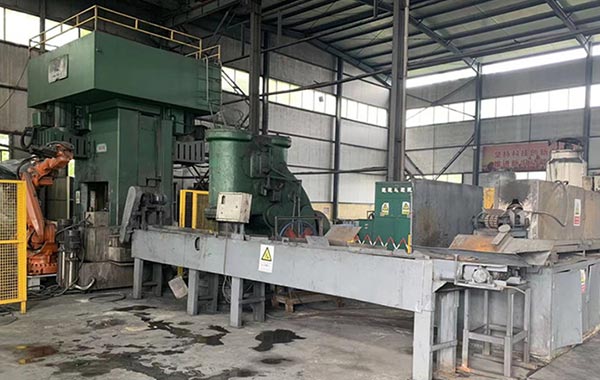During metal forging, various quality defects may occur due to process, equipment, material, or operational factors. These defects not only reduce mechanical properties and service life but may also cause scrapping or structural failure. The following summarizes several typical forging defects and their corresponding corrective measures.
1. Laps
Characteristic: Layer-like metal folds appear on the surface, resembling cracks
Causes: Improper metal flow direction, underheated billet ends, or poor die design.
Solutions:
(1).Optimize preforming and finish forging processes to ensure smooth metal flow;
(2).Control heating temperature to prevent surface underheating;
(3).Improve die cavity fillet design to reduce reverse metal flow.
2. Cracks
Characteristic: Cracks appear on the surface or inside the forging, often along stress concentration zones or grain boundaries.
Causes: Overheating, rapid cooling, insufficient material ductility, or excessive deformation.
Solutions:
(1).Strictly control heating and deformation temperatures;
(2).Use materials with better ductility;
(3).Apply multi-stage deformation to avoid excessive single compression.
3. Overheating and Burning
Characteristic: Coarse grains and loose microstructure, with possible local melting or oxidation in severe cases.
Causes: Excessive heating temperature or prolonged soaking time.
Solutions:
(1).Follow strict heating standards and maintain uniform furnace temperature;
(2).Regularly calibrate furnace temperature control systems;
(3).Perform metallographic inspection on suspected forgings to prevent downstream defects.
4. Segregation and Shrinkage Cavities
Characteristic: Chemical composition segregation or internal porosity and shrinkage cavities within the forging.
Causes: Poor ingot quality, insufficient deformation ratio, or low finish forging temperature.
Solutions:
(1).Use high-quality ingots and ensure adequate upsetting and drawing ratio;
(2).Apply sufficient plastic deformation to eliminate shrinkage cavities;
(3).Perform ultrasonic testing on critical parts.
5. Misalignment
Characteristic: Misalignment between upper and lower dies, causing dimensional deviation or uneven flash.
Causes: Improper die assembly or insufficient equipment guiding accuracy.
Solutions:
(1). Inspect and correct die alignment mechanisms;
(2). Regularly maintain the guiding system of the press;
(3). Strengthen die setup management to ensure alignment precision.
Forging defects usually result from a combination of multiple factors. Only through systematic analysis and continuous improvement across material selection, heating, deformation, die design, and inspection can defects be effectively prevented. This approach ensures the structural uniformity, mechanical performance, and overall reliability of forged products.


